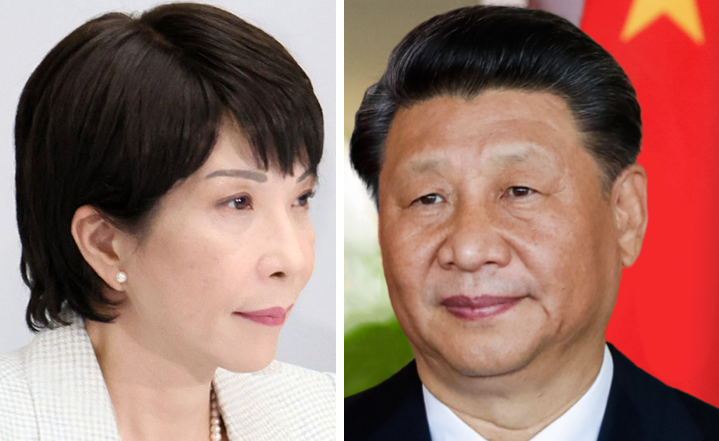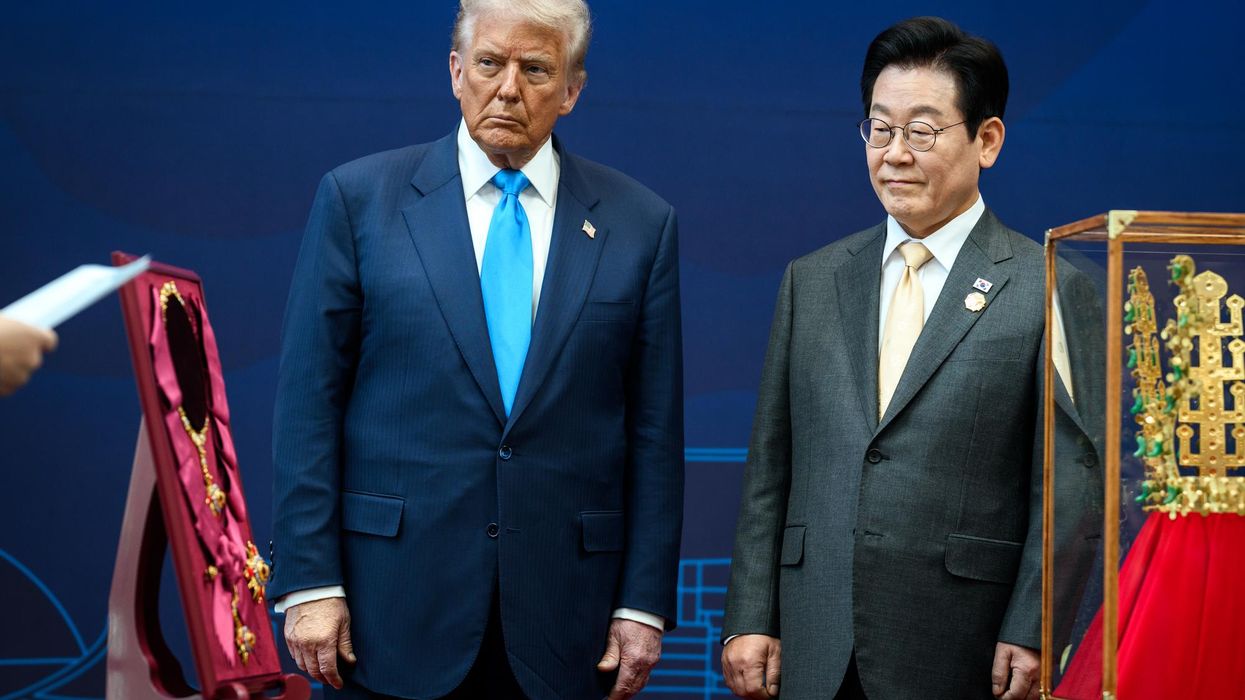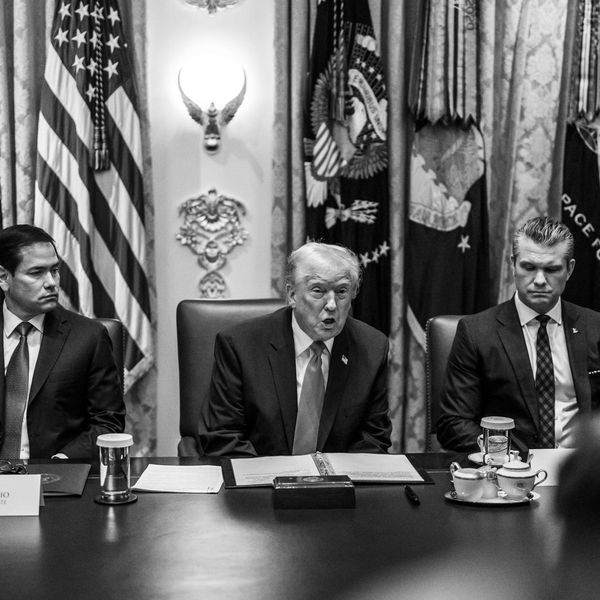On October 4, the Liberal Democratic Party (LDP) in Japan chose Sanae Takaichi — who is expected to reflect a more determined stand in defense of Taiwan — as its president, and the Diet is expected to elect her as prime minister next Wednesday.
(Editor's note, 10/10: The Kōmeitō’s departure from its 26-year coalition with the Liberal Democratic Party (LDP) reported today has complicated Takaichi’s path to the prime ministership and delayed the Diet vote on who will lead Japan.)
During her successful campaign for the leadership, Takaichi repeated her long-held positions regarding security policy: the need for Japan to assume greater responsibility for its own security by building up its defense capabilities; continued strengthening of the U.S.-Japan alliance; deepening U.S.-Japan-South Korea and U.S.-Japan-Philippines trilateral relations as well as the Quad (U.S.-Japan-Australia-India cooperation) to counter China; and realization of the late Prime Minister Shinzō Abe’s vision of a “Free and Open Indo-Pacific.”
But what about her views regarding Taiwan?
In her recent contribution to the Hudson Institute’s discussion on the future of Japanese foreign policy, Takaichi largely reflected Japanese mainstream thinking. She emphasized that “peace and stability in the Taiwan Strait” are of “the utmost importance to the international community, including Japan,” “unilateral changes to the status quo through force or coercion must never occur,” and “Taiwan is an extremely important partner and a valued friend for Japan, sharing fundamental values and maintaining close economic ties and people-to-people exchanges.”
She also insisted that “issues concerning Taiwan should be resolved peacefully through dialogue,” affirmed the 1972 Japan-China Joint Communique, and expressed her wish “to engage in solid and candid dialogue with Chinese leaders.”
But in other statements, Takaichi has been much more forward-leaning regarding Japan’s involvement in the defense of Taiwan. For example, when she first ran for the LDP presidency in September 2021, Takaichi stated that a Taiwan crisis would be a threat to Japan and that the possibility that Japan’s Self-Defense Force would be deployed is high.
She also declared that Japan and the U.S. would need to closely coordinate their response, including exercising the right of collective self-defense. During her second run for the LDP’s top post in September 2024, Takaichi suggested that a scenario in which China imposed a maritime blockade on Taiwan could qualify as a “crisis that threatens the nation’s existence.” Under such a scenario, according to legislation passed in 2015, Tokyo could use force even before a direct military attack on Japanese territory.
In a speech in Taiwan itself just last April, Takaichi noted the importance of both Japan and Taiwan strengthening their respective defense capabilities but added that neither can defend itself alone. Therefore, she stressed the need to deepen mutual cooperation among the United States, Taiwan, and Japan, and potentially the Philippines, Australia, and EU nations.
In two policy briefs recently published by the Quincy Institute, Michael Swaine articulates a view that runs counter to Takaichi’s and the perspectives of much of the mainstream Japanese foreign and security policy community. Swaine argued that Taiwan is not a vital U.S. security interest and that Washington should therefore avoid a catastrophic war with China over the Taiwan issue.
To promote peace and stability in the Taiwan strait, he argues, the U.S. should move to a policy of strategic clarity whereby Washington would declare that it would not directly fight China to defend Taiwan but rather simply work to strengthen Taiwan’s own military capabilities and take other political, economic, and diplomatic measures to deter China without direct U.S. military intervention.
Although such a policy shift, if implemented prudently as outlined by Swaine, would ultimately serve Japan’s national interest, Japan under Takaichi’s leadership is likely to oppose this change.
Japanese misgivings about Swaine’s proposal will center around two points. First, Japanese policymakers will insist that Taiwan is indeed a critical interest because if China were to unify Taiwan with the mainland through military force, it would be able to use the island as a strategic asset to threaten Japanese sea lanes and even Japanese territory, especially Okinawa.
Second, they will argue that the adoption of such a policy would weaken deterrence and dramatically increase the possibility that China will resort to force to unify Taiwan with the mainland. Indeed, concerns about the weakening of deterrence prompted Shinzō Abe after his retirement as prime minister to ask Washington to adopt a policy of strategic clarity in the opposite direction; namely, that the U.S. should clearly state that it would intervene militarily to defend Taiwan.
Although these two objections may seem compelling at first glance, they are ultimately unpersuasive.
First, the argument that Beijing’s control over Taiwan poses a critical threat to Japan’s security and national survival inflates the Chinese threat. Although Beijing has long held that the recovery of Taiwan, which China lost after its defeat in the 1895 Sino-Japanese war, is a core interest of China, it does not necessarily follow that Beijing will use Taiwan as a stepping stone to seize Japanese territory such as Okinawa.
Anti-China hawks in Japan emphasize how some Chinese commentators have highlighted the Ryūkyū Kingdom’s status as a tributary state during the Ming and Qing dynasties. The Ryūkyū Kingdom was indeed a political entity with close trade and political relations with China before Japan dismantled the kingdom and incorporated its territory into Japan as Okinawa Prefecture, but it is farfetched to claim that China therefore has the strategic intention to seize the Okinawan islands after unifying Taiwan with mainland China. Chinese officials have never suggested they had such a goal.
China’s strategic interest in Okinawa stems not from a desire to take that territory, but rather its concern that Okinawa has become an important base for U.S. military operations to intervene in a Taiwan conflict. If Taiwan became a less contentious military issue between China and the United States, the Chinese military threat to Japanese territory would abate.
One exception might be Japanese fears of Chinese claims over the Senkaku/Diaoyu Islands. But compared to Taiwan, China’s irredentist claims over these small uninhabited islands is much weaker. Rather than seizing these islands by force, China’s intentions are focused on getting Japan to recognize the existence of a territorial dispute.
Given that China’s interest in these maritime features pales in comparison to its commitment to China-Taiwan unification, it is far from clear that China intends to risk a military conflict with Japan (and possibly the United States) to seize the islands by force.
As a consequence, Japanese defense capabilities should be more than sufficient to deter China. To be sure, if Taiwan came under Chinese control, the Chinese navy could more easily access the Pacific Ocean because it would not confront the choke points along the Ryūkyū Island chain. But given China’s interest in international trade, it is hard to imagine Beijing threatening Japan’s sea lanes beyond its claims to Taiwan. Although such a Chinese action might occur under conditions of war, it is very hard to conceive of what would generate such a war, other than the Taiwan issue.
Second, the argument that Washington moving away from directly defending Taiwan would invite a Chinese attack on Taiwan reflects an incomplete understanding of how deterrence works and can fail.
Certainly, if the U.S. had both the will and military capability to inflict unacceptable punishment on China or to deny its ability to seize or compel Taiwan by military force or coercion, then China might be deterred from attacking Taiwan. But given China’s commitment to unifying Taiwan with the mainland, Beijing will inevitably respond to U.S. upgrades in military deterrence by strengthening its own capabilities to increase the costs and risks of American military intervention.
In an arms race between China and the United States, Beijing has the advantage of geographic proximity, a primary focus on the Taiwan issue, and few political constraints on the allocation of resources to pursue its irredentist aims regarding Taiwan. Although the United States will certainly need the support of allies like Japan to balance against the buildup of Chinese military capabilities, even under Takaichi’s hawkish leadership, Japan is unlikely to have the political will and the economic capacity to make up for the long-term disadvantages that Washington faces in its military competition with Beijing in the regional theater relevant in a Taiwan conflict.
With the ongoing military competition and the increase in military exercises in the region, the danger of some kind of military accident that could escalate into an actual conflict neither side wants is rising.
In short, an overemphasis on military deterrence could ignite an inadvertent war. For deterrence to be effective, it is important to reassure the target country — China — that its vital interests are not being threatened. China has repeatedly stated that the eventual “reunification” of China and Taiwan, as well as the prevention of Taiwan’s independence, are core interests.
From China’s perspective, Washington and its allies, including Japan, are encouraging pro-independence forces in Taiwan and undermining the understandings that formed the basis of normalization between China and both Japan and the U.S.
In 1972, Japan declared that it “fully understands and respects” the People’s Republic of China’s stance that “Taiwan is an inalienable part of the territory of the People’s Republic of China.” In 1979, the United States acknowledged “the Chinese position that there is but one China and Taiwan is part of China.” If Takaichi were to enhance Tokyo’s security engagement with Taiwan, as well as encourage Washington to buttress military deterrence and bolster its defense ties with Taiwan, Beijing is likely to escalate its coercive actions around Taiwan as well as accelerate its military buildup.
This negative action-reaction spiral could eventually drive the Chinese leadership into a corner and lead them to conclude that the possibility of peaceful unification has disappeared and that the use of military force is the only viable option.
Even under President Xi Jinping, China prefers peaceful unification; but it has long reserved the option of military force to prevent Taiwan from moving toward formal independence. A certain level of deterrence is indeed necessary to persuade China not to use force against Taiwan. Swaine has argued that a strengthening of Taiwan’s own defense capabilities and the negative impact a Taiwan war would have on the Chinese economy (and China’s overall reputation if it were to attack Taiwan) would contribute to deterrence by making the military option unattractive to China.
But for deterrence to work without the negative risks outlined above, China must be convinced to be patient about unification. Essential to nurturing such patience is the promotion of cross-strait dialogue, the stabilization and improvement of U.S.-China and Japan-China relations, and U.S. and Japanese restraint regarding security ties with Taiwan.
Swaine’s proposal would be in Japan’s national interest because such a policy shift, if properly handled, has the potential to reduce the danger of war while preserving Taiwan’s security. Moreover, if Washington were to intervene in such a conflict by using its military assets in Japan against Chinese forces or the Chinese homeland, Beijing is likely to use its formidable missile capabilities to strike U.S. military bases throughout the Japanese archipelago, not just those located in Okinawa, and perhaps even Self-Defense Force bases that could support U.S. military intervention.
The conflict could rapidly escalate and endanger the lives and livelihood of Japanese civilians.
In proclaiming that “Japan is back,” Sanae Takaichi seeks to revive her nation’s economy, improve the livelihood of all Japanese, promote Japan’s security, and enhance its diplomatic influence. The best way for her to achieve these aspirations is to work with the United States in pursuing a strategy of peace along the lines recommended by Swaine, and not by aggravating the Taiwan issue and escalating tensions with China.
- The mixed legacy of Shinzo Abe ›
- China hawks dominate pool for Japan’s next prime minister ›
- Takaichi 101: How to torpedo relations with China in a month | Responsible Statecraft ›
















